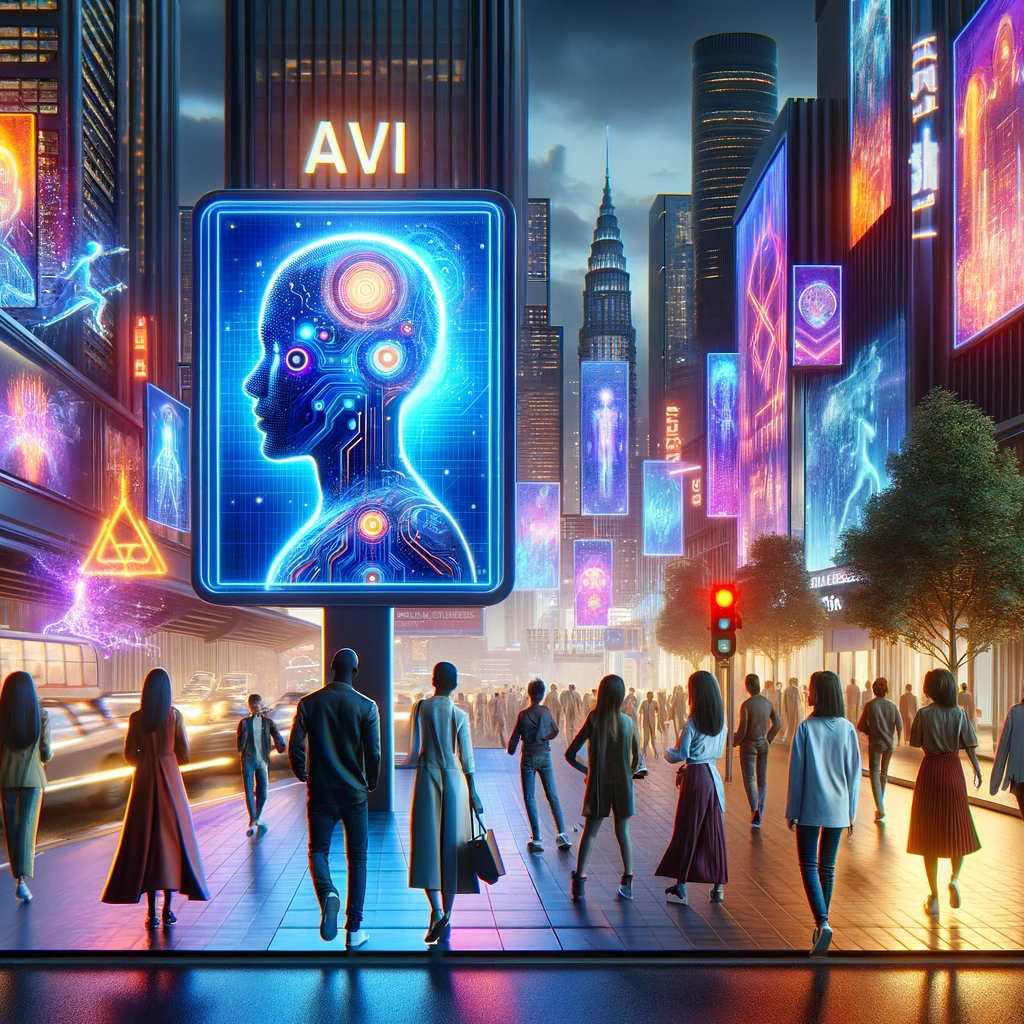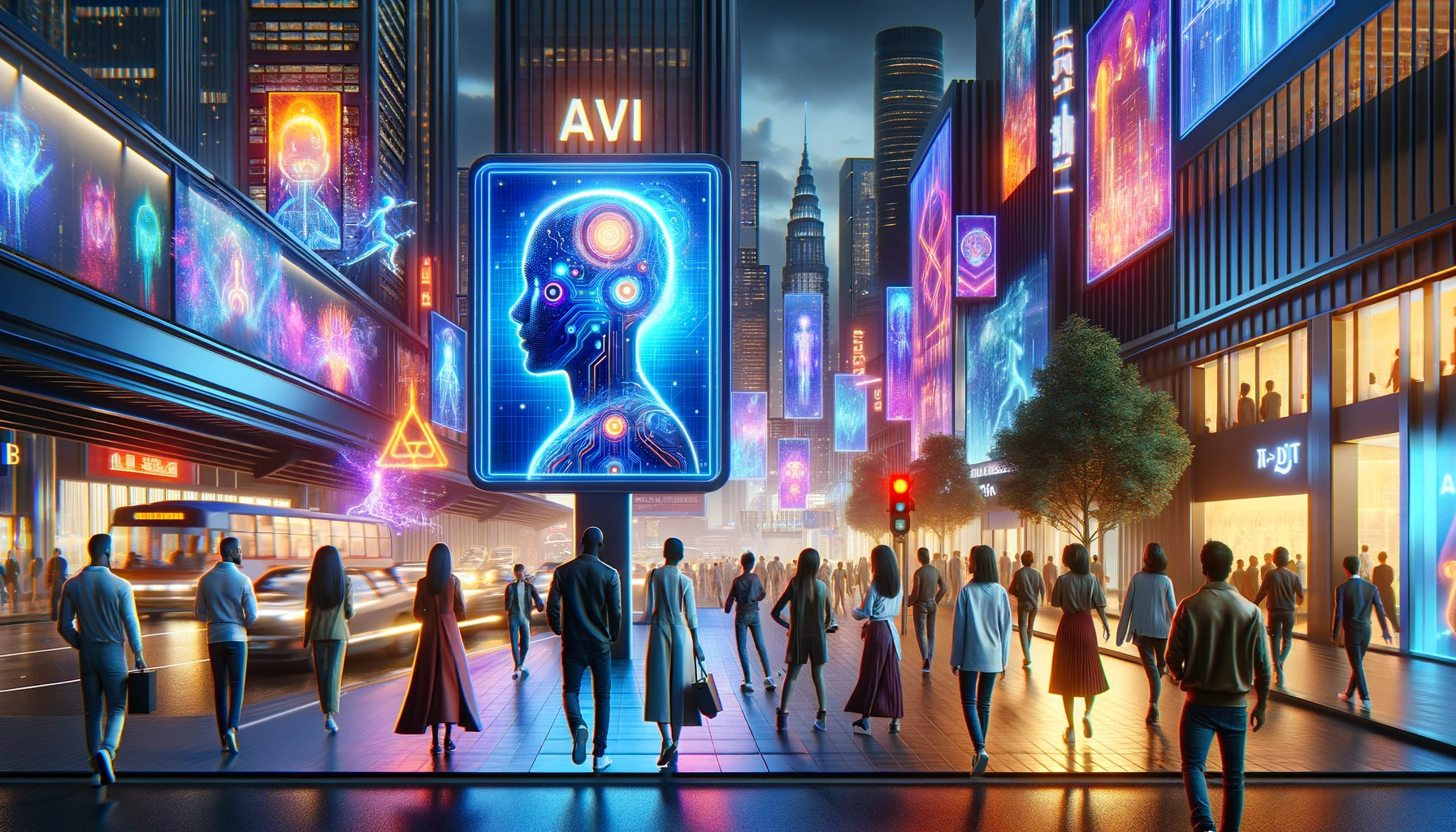Introduction
In the ever-evolving landscape of marketing, The Aesthetic Appeal of AI of Artificial Intelligence (AI) has emerged as a game-changer, particularly in the realm of visual content creation. The infusion of AI in marketing strategies is not just about leveraging technology for efficiency; it’s about revolutionizing the aesthetic dimensions of marketing campaigns. In this blog, we delve into how AI is reshaping the visual aspect of marketing, making campaigns more appealing, personalized, and impactful.

The Artistic Transformation Through AI
AI technology, with its advanced algorithms and data-processing capabilities, has opened up new horizons for marketers to explore creative and visually engaging content. This transformation is not just about automating tasks; it’s about augmenting the creative process. AI tools are now capable of analyzing trends, colors, and styles that resonate with target audiences, enabling marketers to craft campaigns that are not only visually stunning but also strategically aligned with consumer preferences.
One significant breakthrough in this realm is the use of generative adversarial networks (GANs). These AI models can generate original images and designs, offering a level of creativity that was once solely the domain of human artists. This means marketers can create unique, eye-catching visuals that stand out in a crowded digital landscape.
Personalization and Precision: AI’s Visual Impact
Another facet where AI shines in visual marketing is personalization. AI algorithms can sift through vast amounts of data to understand individual preferences, allowing marketers to tailor their visuals to specific segments of their audience. This level of personalization means that visuals are not just aesthetically pleasing but also highly relevant and engaging to the viewer.
Moreover, AI enables precision in targeting and placement of visual content. By analyzing user behavior and engagement patterns, AI can determine the optimal channels and formats for visual content, ensuring that it reaches the right audience at the right time. This precision not only enhances the effectiveness of marketing campaigns but also elevates the overall aesthetic experience for the consumer.
The Ethical and Creative Balance
While the opportunities with AI in visual marketing are immense, it’s crucial to strike a balance between creativity and ethical considerations. As AI-generated visuals become more prevalent, there’s a growing need to maintain authenticity and ethical standards in marketing practices. Marketers must ensure that AI is used to enhance human creativity, not replace it, and that the content generated is not misleading or insensitive.
Harnessing AI for Visual Storytelling
In the age of digital media, storytelling through visuals has become a cornerstone of effective marketing. AI significantly enhances this aspect by creating visuals that not only attract attention but also compellingly narrate a brand’s story. Through AI, marketers can develop a narrative that is both visually appealing and contextually relevant. AI’s ability to analyze historical data and consumer trends enables it to suggest and create imagery that resonates with the brand’s narrative and audience preferences, thus creating a more profound and emotional connection with the viewers.
The Role of AI in Video Marketing
The impact of AI extends beyond static imagery to the dynamic world of video marketing. With AI, marketers can automate certain aspects of video production, such as editing, formatting, and even generating video content. This not only saves time but also allows for the creation of more personalized and engaging video content. AI-driven video analytics further aid in understanding how viewers interact with the content, enabling marketers to fine-tune their strategies for maximum impact.
Innovations in AI and Augmented Reality (AR) in Marketing
The fusion of AI with Augmented Reality (AR) is setting new benchmarks in interactive marketing. By overlaying digital information in the real world, AR creates immersive experiences for consumers. AI enhances this by making AR experiences more responsive and personalized. For instance, AI can analyze a user’s environment and preferences in real-time to modify AR content accordingly, creating a more engaging and relevant experience.
AI-Driven Aesthetic Trends in Marketing
AI is not only a tool for creating content but also a trendsetter in the aesthetic domain. By analyzing vast amounts of online content, AI can identify emerging visual trends and styles. Marketers can leverage these insights to stay ahead of the curve, adopting styles and aesthetics that are likely to appeal to their audience. This proactive approach to trend adoption places brands at the forefront of aesthetic innovation.
Challenges and Opportunities in AI-Driven Visual Marketing
While the benefits of AI in visual marketing are clear, challenges remain. One of the primary concerns is the need for a balance between AI-generated content and human creativity. There is a risk of losing the unique touch that human creators bring to visuals. Furthermore, ethical considerations around data privacy and the representation of AI-generated content must be addressed.
Despite these challenges, the opportunities for AI in visual marketing are vast. As AI technology continues to evolve, we can expect more sophisticated and creative applications in the marketing domain. The future might see AI not just as a tool for creating visuals but as a collaborative partner in the creative process, working alongside human marketers to produce visually stunning and emotionally resonant campaigns.
The Evolution of Brand Identity with Aesthetic Appeal of AI
As AI becomes more integrated into marketing, its role in shaping and evolving brand identity is becoming increasingly apparent. Brands are now able to use AI to analyze market trends, consumer behavior, and social media patterns to develop a visual identity that is not only appealing but also resonates with their target audience. This dynamic approach to brand identity allows for continuous adaptation and relevance in a fast-paced market. AI-driven analytics provide insights into which colors, designs, and imagery align best with a brand’s values and audience preferences, ensuring that every visual element contributes to a cohesive and appealing brand image.
Enhancing User Experience with Aesthetic Appeal of AI-Generated Visuals
The impact of AI in visual marketing extends beyond aesthetics; it significantly enhances user experience. By creating personalized and contextually relevant visuals, AI helps brands establish a more meaningful connection with their audience. Interactive AI features like chatbots and virtual assistants, when combined with visually appealing interfaces, create a more engaging and user-friendly experience. This level of personalization not only improves customer satisfaction but also fosters brand loyalty.
The Future of Aesthetic Appeal of AI in E-commerce Visuals
In the realm of e-commerce, AI is revolutionizing how products are showcased. AI algorithms can now generate lifelike product images and models, allowing customers to visualize products in a more detailed and realistic manner. This not only saves costs and time associated with traditional photography but also enhances the online shopping experience. AI can also tailor the display of products based on individual user behavior, showing them items they are more likely to be interested in, thereby increasing the chances of a purchase.
Integrating AI with Social Media Marketing
Social media platforms are fertile ground for visual marketing, and AI is playing a crucial role in optimizing content for these platforms. AI tools can analyze which types of visuals perform best on different social media platforms and suggest content modifications to maximize engagement. This includes identifying the optimal sizes, formats, and styles for images and videos, ensuring that content not only looks great but also fits perfectly within the specific constraints and cultures of each platform.
Conclusion
In conclusion, the integration of AI in marketing represents a significant shift in how visual content is created and consumed. It offers an unprecedented opportunity to craft aesthetically appealing, personalized, and impactful marketing campaigns. As technology continues to advance, the potential for AI in the aesthetic realm of marketing will only grow, promising a future where AI and human creativity combine to redefine the standards of visual marketing. This is an exciting time for marketers, creators, and consumers alike, as we step into an era where the beauty of visuals and the power of AI come together to create unforgettable marketing experiences.
Also, visit my other post- The Future Forecast: How AI is Shaping the Future of Marketing.


Add a Comment